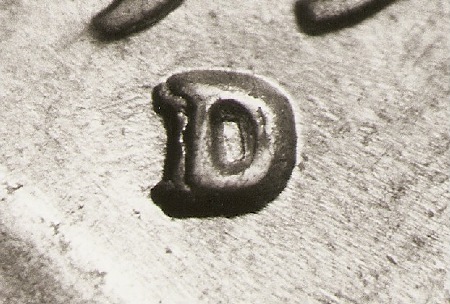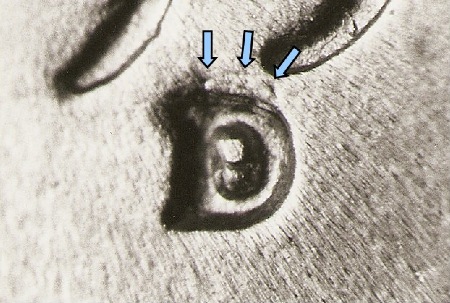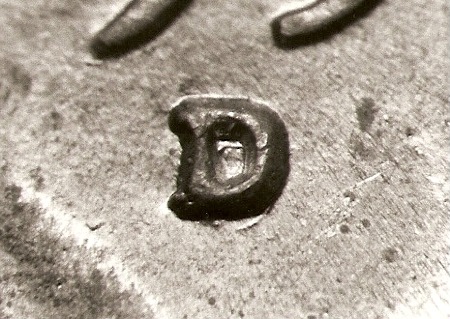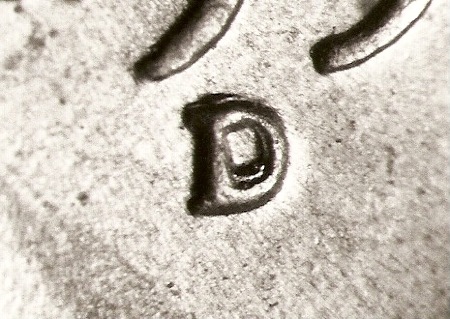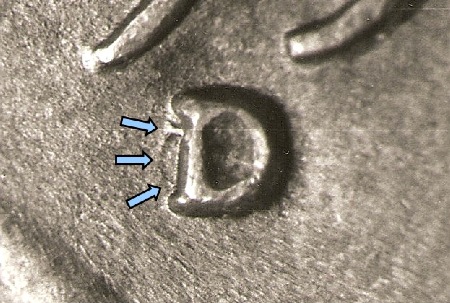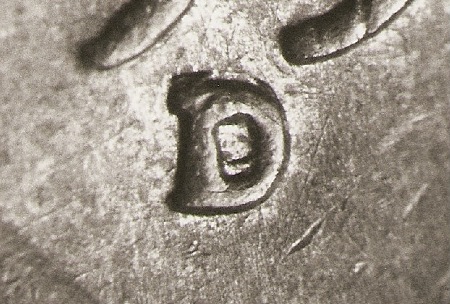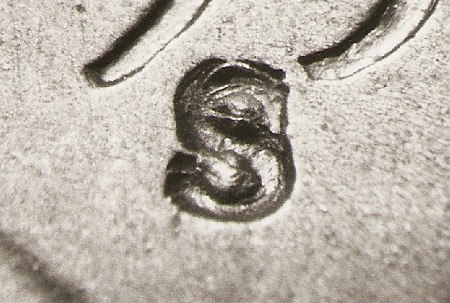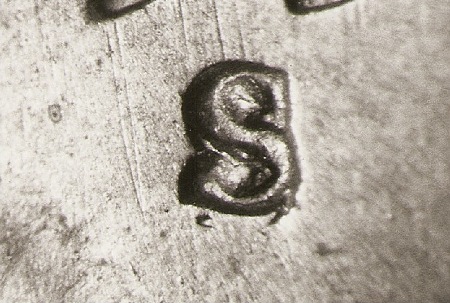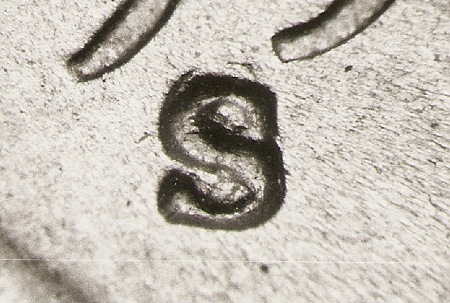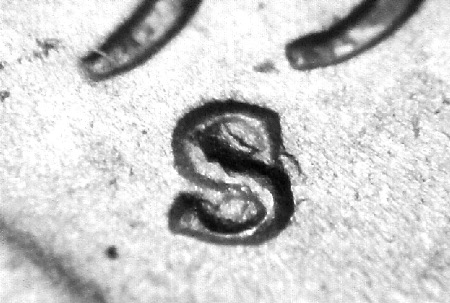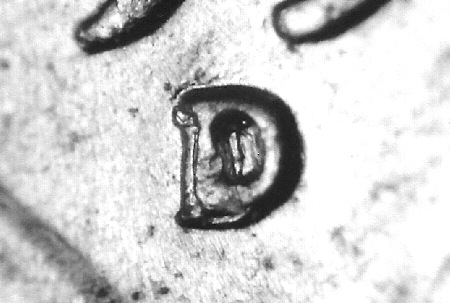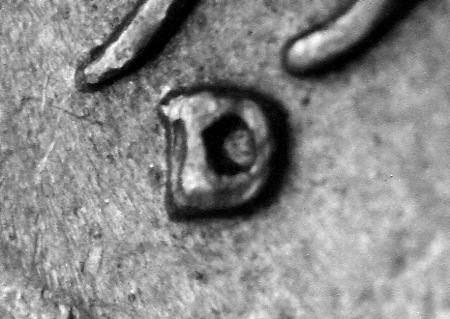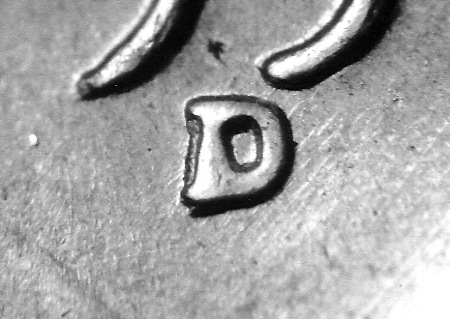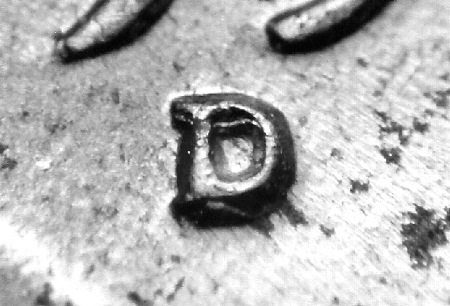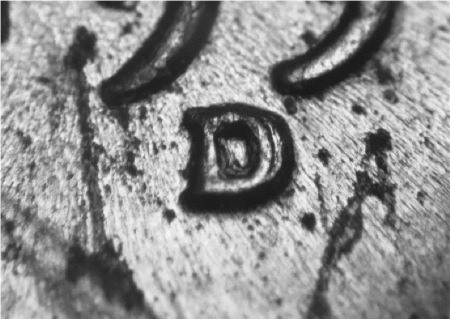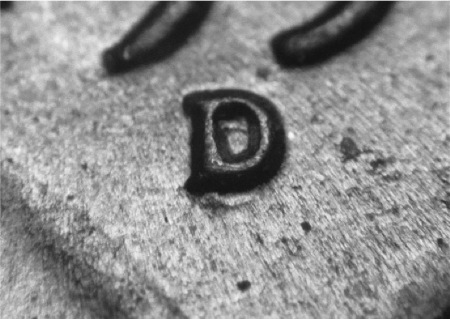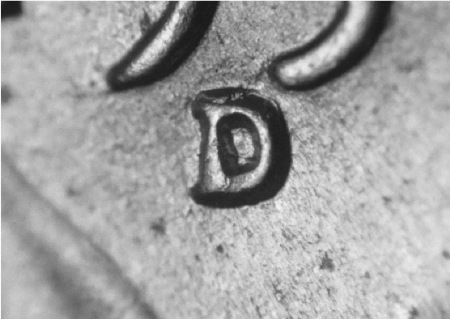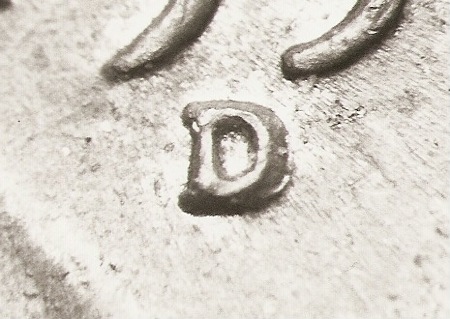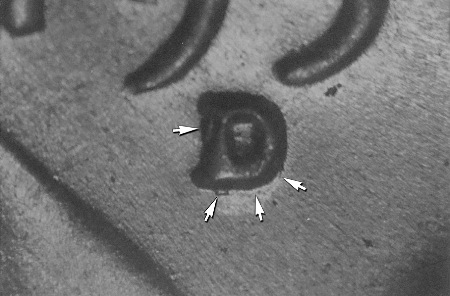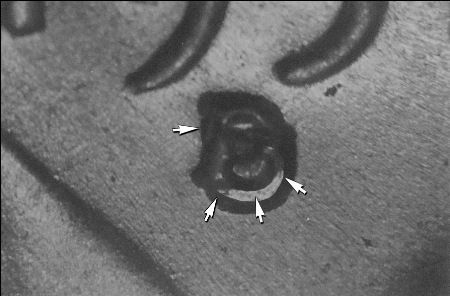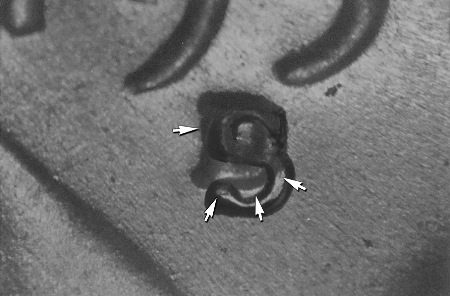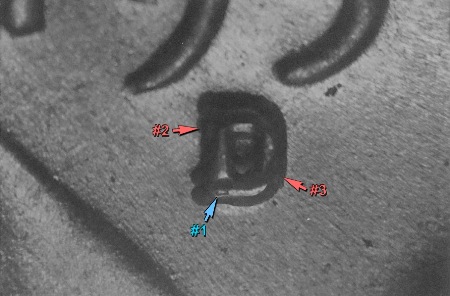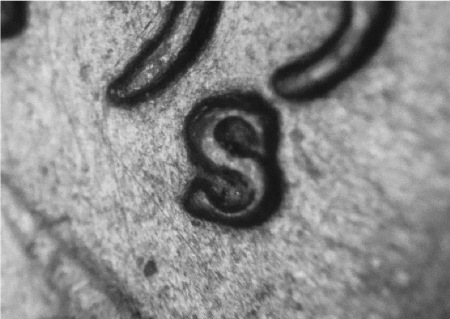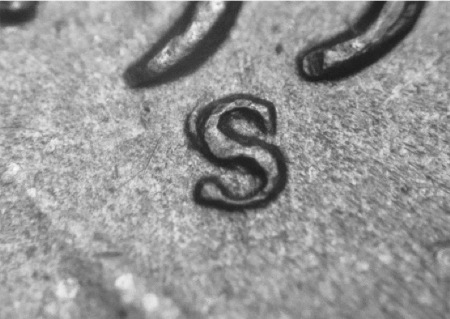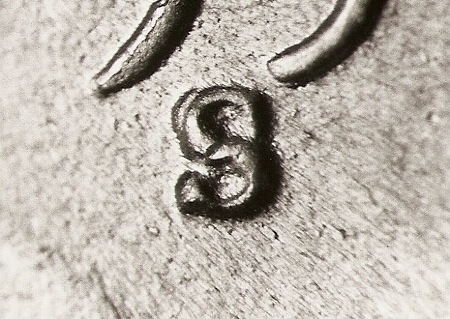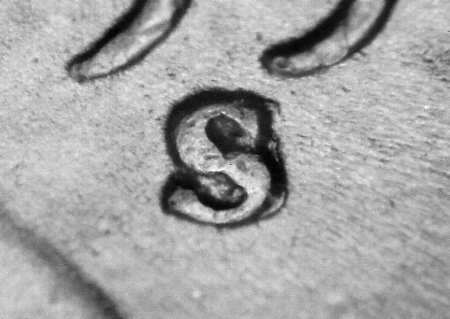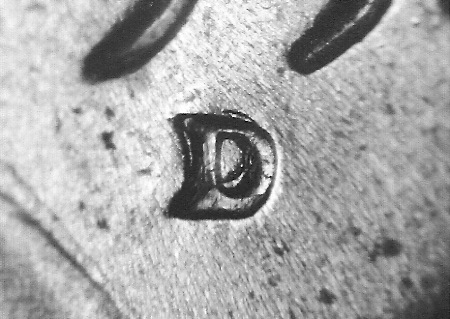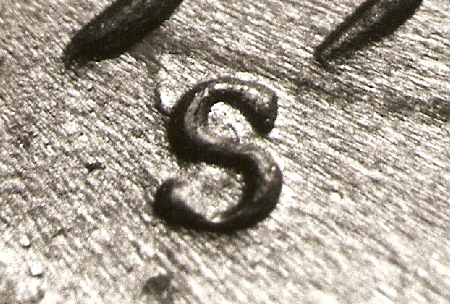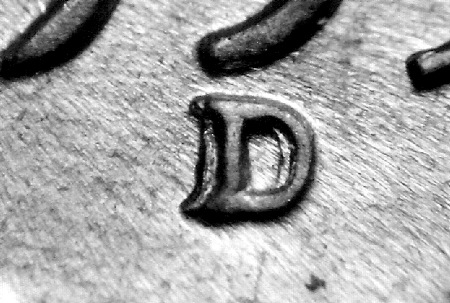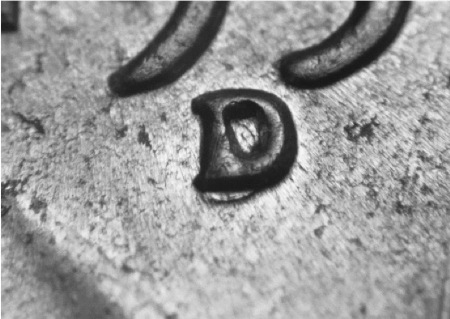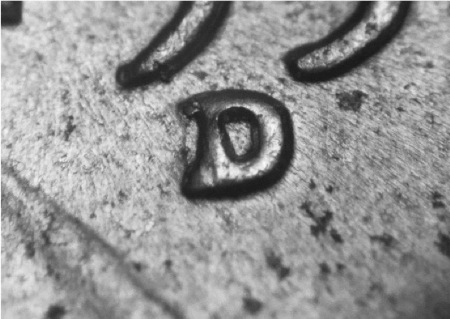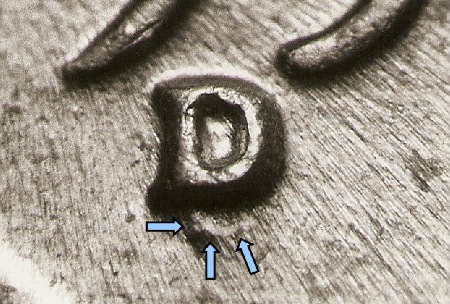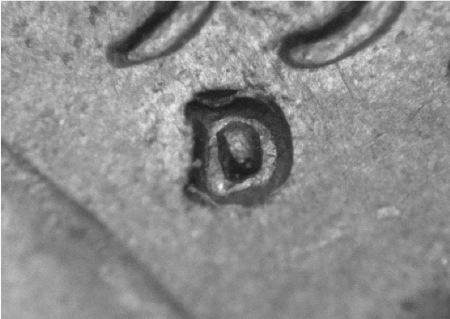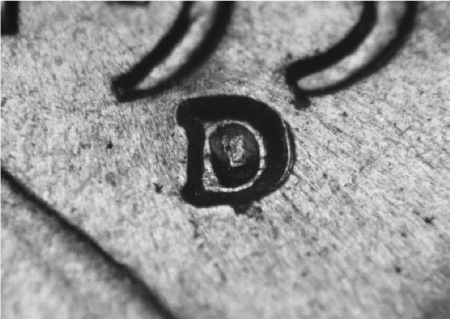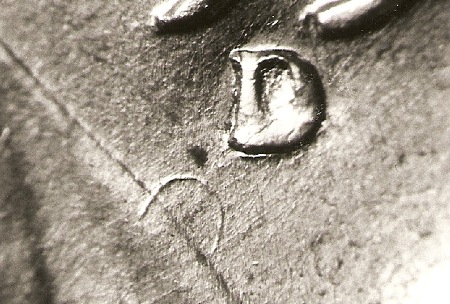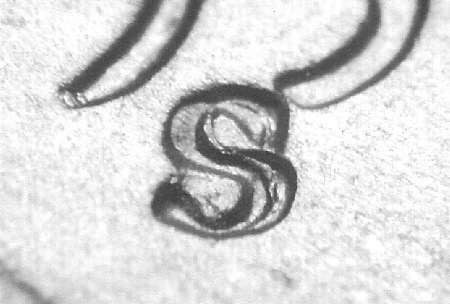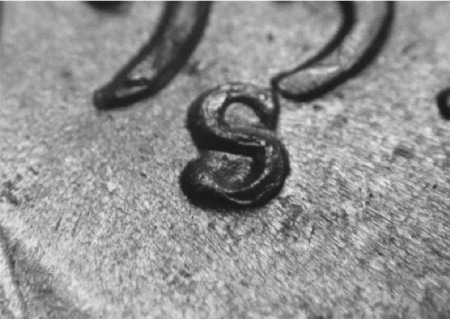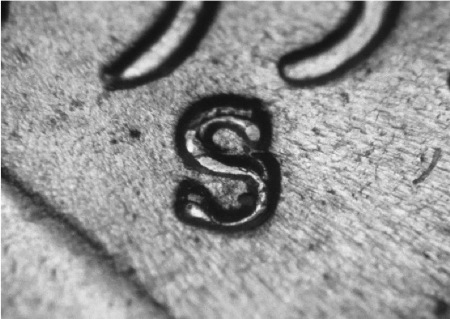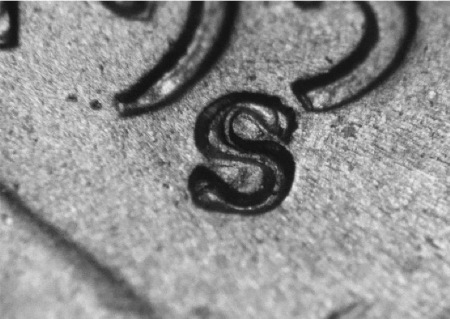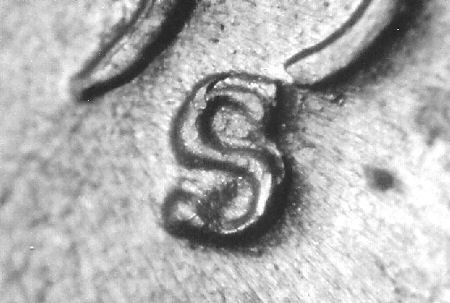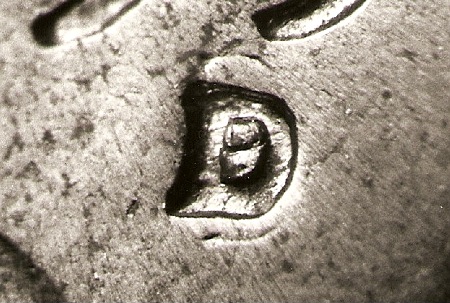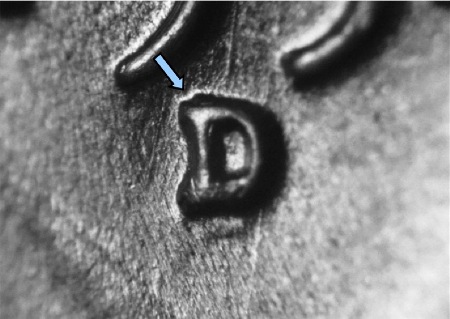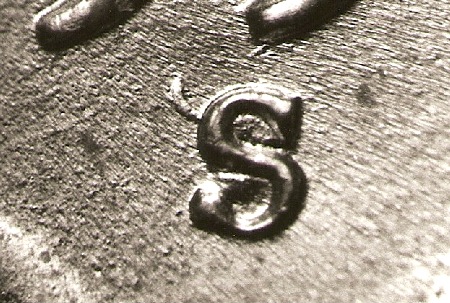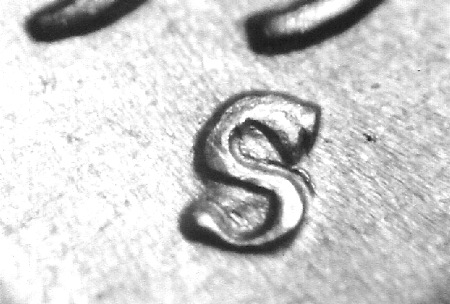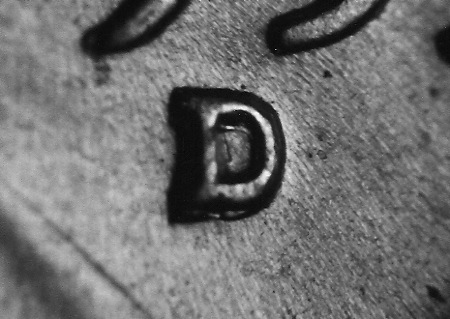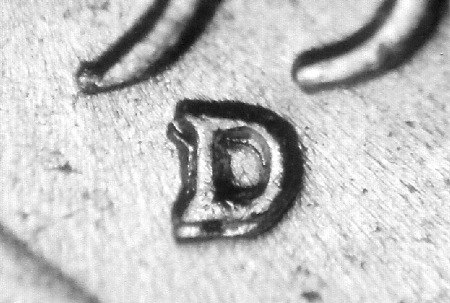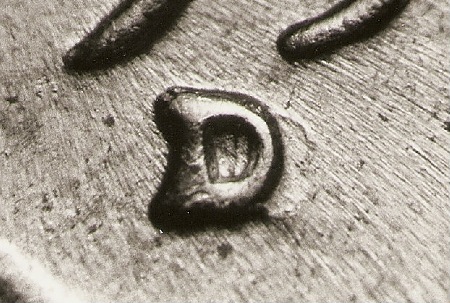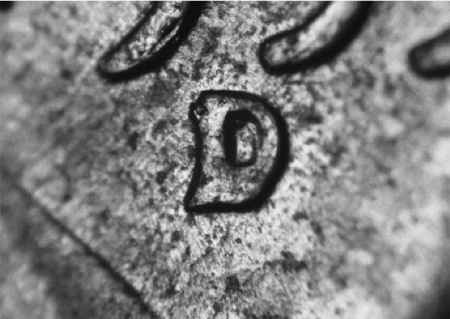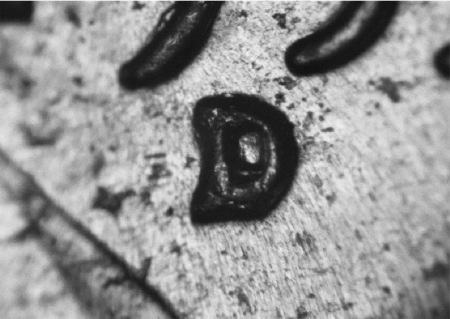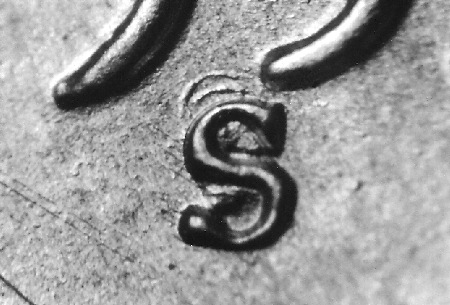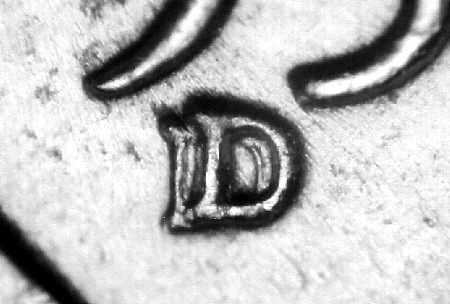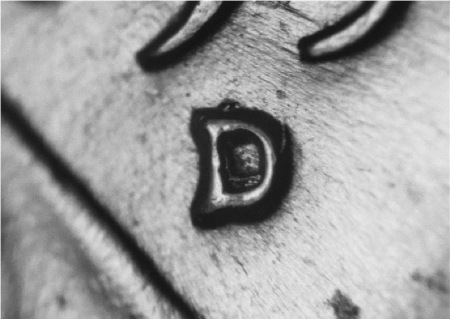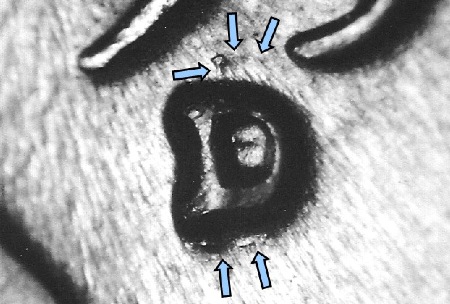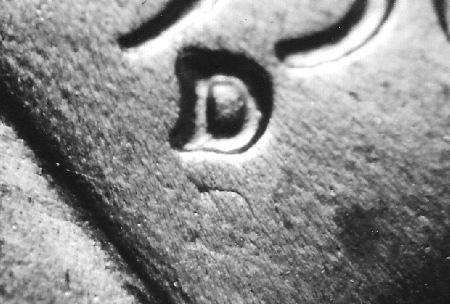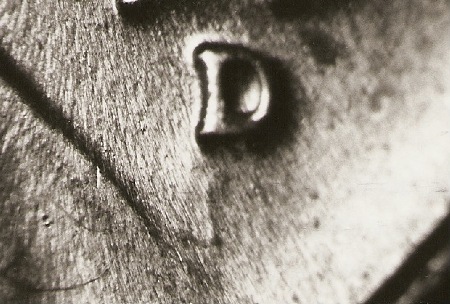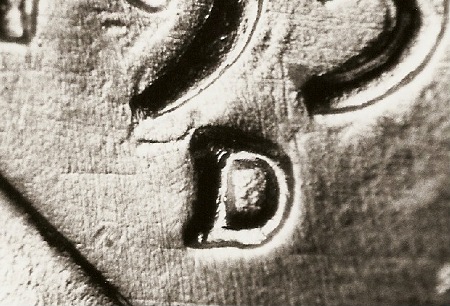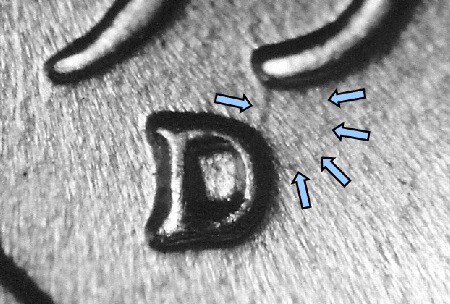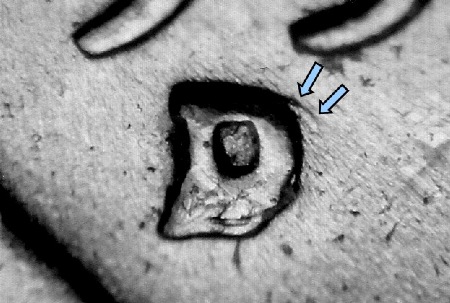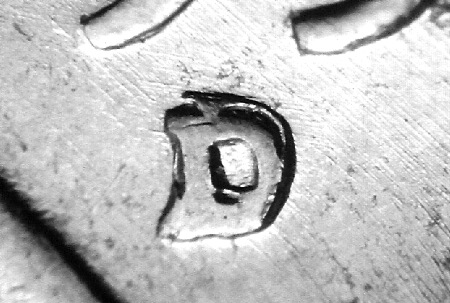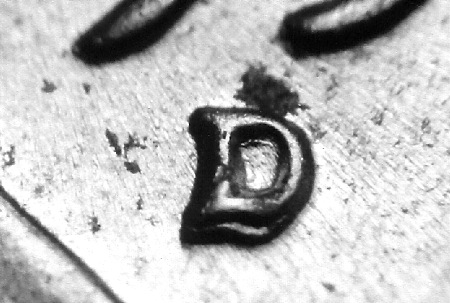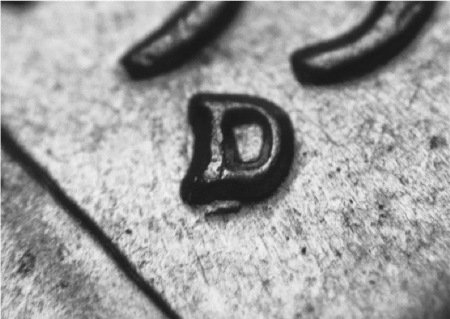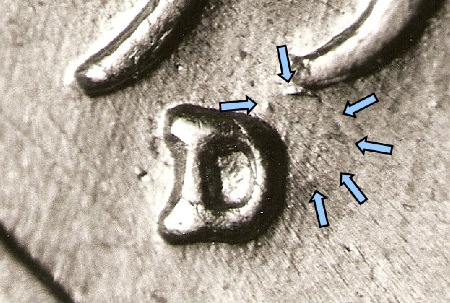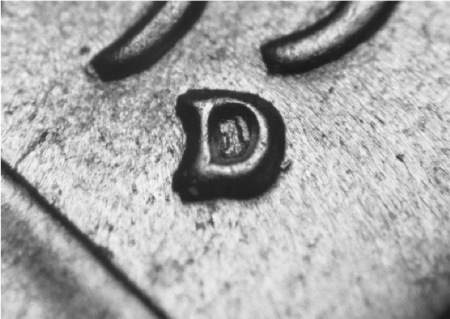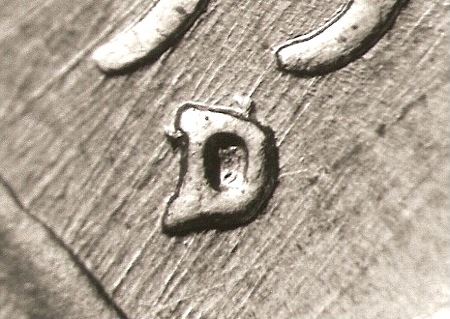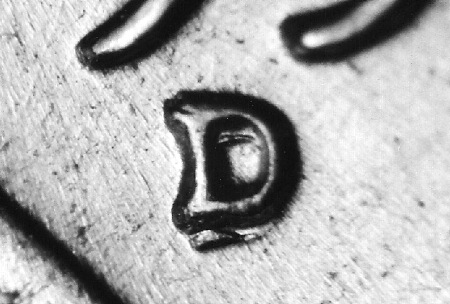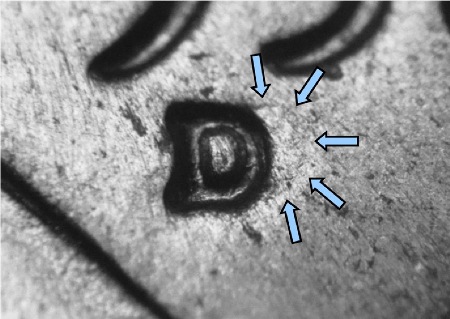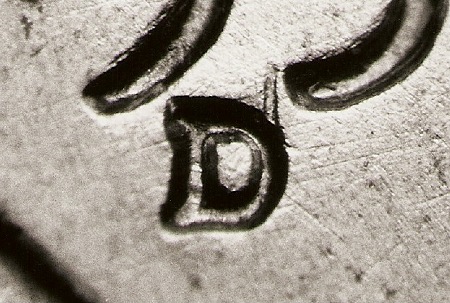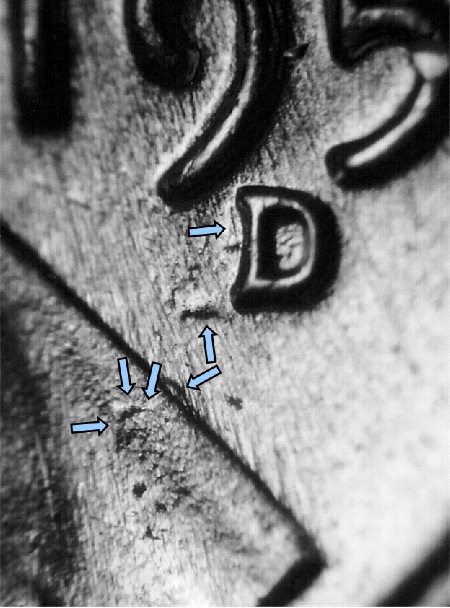


 |
 |
 |
 |
 |
 |
 |
 |
 |
 |
 |
 |
 |
 |
 |
 |
 |
 |
 |
 |
 |
 |
 |
 |
1950-D 1¢ WRPM-001 Description: D/D West Cross References: CONECA: RPM #1, Coppercoins: 1950D-1MM-001, Crawford: CRPM-001 Top 100 RPM: Wexler & CONECA
1950-D 1¢ WRPM-002 Description: D/D North Cross References: CONECA: RPM #2, Coppercoins: 1950D-1MM-002 Top 100 RPM: Wexler
1950-D 1¢ WRPM-003 Description: D/D/D South & Tilted (Rotated) Cross References: CONECA: RPM #4, Coppercoins: 1950D-1MM-004
1950-D 1¢ WRPM-004 Description: D/D North Cross References: CONECA: RPM #5, Coppercoins: 1950D-1MM-005
1950-D 1¢ WRPM-005 Description: D/Horizontal D Cross References: CONECA: RPM #3, Coppercoins: 1950D-1MM-003, Crawford: CRPM-004 Top 100 RPM: Wexler Comments: CONECA does not recognize this variety as a D/Horizontal D variety. Instead, they list it as a D/D Southwest and Tilted. All of the other cross-referenced attributers recognize it as a D over a Horizontal D. You be the judge.
1950-D 1¢ WRPM-006 Description: D/D North Cross References: CONECA: RPM #6, Coppercoins: 1950D-1MM-006
1950-S 1¢ WRPM-002 Description: S/S/S North & North Cross References: CONECA: RPM #2, Coppercoins: 1950S-1MM-002
1950-S 1¢ WRPM-003 Description: S/S South Cross References: CONECA: RPM #3, Coppercoins: 1950S-1MM-003
1950-S 1¢ WRPM-004 Description: S/S North Cross References: CONECA: RPM #4, Cherrypickers: FS-01-1950S-501 (021.34), Coppercoins: 1950S-1MM-004 Top 100 RPM: CONECA
1950-S 1¢ WRPM-022 Description: S/S Northeast Cross References: CONECA: RPM #8, Coppercoins: 1950S-1MM-008, Crawford: CRPM-003
1951-D 1¢ WRPM-001 Description: D/D/D Southwest & East Cross References: CONECA: RPM #1, Coppercoins: 1951D-1MM-001
1951-D 1¢ WRPM-002 Description: D/D West Cross References: CONECA: RPM #2, Coppercoins: 1951D-1MM-002 Comments: We would welcome the opportunity to photograph a high grade specimen of this variety.
1951-D 1¢ WRPM-003 Description: D/D/D West & Tilted (Rotated) Cross References: CONECA: RPM #3, Coppercoins: 1951D-1MM-003
1951-D 1¢ WRPM-004 Description: D/D South Cross References: CONECA: RPM #4, Coppercoins: 1951D-1MM-004 Top 100 RPM: CONECA
1951-D 1¢ WRPM-008 Description: D/D/D Northeast & West Cross References: CONECA: RPM #8, Coppercoins: 1951D-1MM-008 1951-D 1¢ WRPM-010 Description: D/D East Cross References: CONECA: RPM #10, Coppercoins: 1951D-1MM-010 1951-D 1¢ WRPM-016 Description: D/D South Cross References: CONECA: RPM #16, Coppercoins: 1951D-1MM-016 1951-D 1¢ WRPM-018 Description: D/D/D North & South Cross References: CONECA: RPM #18, Coppercoins: 1951D-1MM-018 1951-D 1¢ WRPM-021 Description: D/D North Cross References: CONECA: RPM #21, Coppercoins: 1951D-1MM-021 1951-D 1¢ WRPM-029 Description: D/D East Cross References: CONECA: RPM #29, Coppercoins: 1951D-1MM-029, Crawford: CRPM-001
1951-D 1¢ WRPM-077 Formerly listed as WOMM-001 Description: D/D/D South & Nearly Horizontal D Cross References: CONECA: OMM #1, Cherrypickers: FS-01-1951D-501 (021.5), Coppercoins: 1951D-1OM-001 Comments: Research by John Bordner, Billy G. Crawford, and John A. Wexler has led to the conclusion that this variety is a multiple punched D mint mark rather than a D/S mint mark as previously believed. Not all die variety specialists are in agreement and CONECA still lists the variety as an OMM (D/S). You need to judge and decide for yourself.
This image from Billy G. Crawford shows the key highpoints of what has been thought to be an underlying S mint mark. The marking at the lower left arrow is now believed to be part of an underlying D to the south. The top left arrow and the raised area inside the D are believed to be parts of an underlying horizontal D mint mark. The lower center and lower right arrows are consistent with either the horizontal D or the D to the south as will be seen in the following overlays from Billy G. Crawford.
This overlay from Billy G. Crawford shows a horizontal D overlay. Note how the highpoints of the upper left arrow and the two lower right arrows are a perfect match for what is seen on the supposed S. The lower left arrow also appears to match, but the shape is not right for what is seen at the point without the overlay. The element at the lower left arrow is believed to be part of an additional D punched to the south.
This overlay from Billy G. Crawford attempts to align an S with the key points indicated by arrows on the supposed D/S. Note that the bottom left and bottom right arrows do not coincide with the high points of the S.
Moving the S to coincide with the lower left and lower right arrows moves the S out of alignment with the upper left and lower center arrows.
This overlay from Billy G. Crawford shows how the bottom left arrow in the previous photos (#1 in this photo) matches a D/D South. 1951-D 1¢ WRPM-078 Formerly listed as WOMM-002 Description: D/D South Cross References: CONECA: OMM #2, Cherrypickers: FS-01-1951D-502 (021.52), Coppercoins: 1951D-1OM-002, Crawford: CRPM-002 Comments: Research by John Bordner, Billy G. Crawford, and John A. Wexler has led to the conclusion that this variety is a repunched D mint mark rather than a D/S mint mark as previously believed. This variety was listed in the original The RPM Book as an RPM and an OMM. At some point later the listing was changed to an OMM (D/S) variety by CONECA. Not all die variety specialists are in agreement and CONECA still lists the variety as an OMM (D/S). You need to judge and decide for yourself.
This image courtesy of Billy G. Crawford shows keys points of the underlying mint mark that some believe to be an S mint mark.
This overlay from Billy G. Crawford shows that the secondary mint mark aligns perfectly with a D/D South. 1951-S 1¢ WRPM-001 Description: S/S East Cross References: CONECA: RPM #1, Coppercoins: 1951S-1MM-001 1951-S 1¢ WRPM-002 Description: S/S East Cross References: CONECA: RPM #2, Coppercoins: 1951S-1MM-002 1951-S 1¢ WRPM-003 Description: S/S Northwest Cross References: CONECA: RPM #3, Coppercoins: 1951S-1MM-003 Comments: We would welcome the opportunity to photograph a high grade specimen of this variety. 1951-S 1¢ WRPM-004 Description: S/S West Cross References: CONECA: RPM #4, Coppercoins: 1951S-1MM-004 1951-S 1¢ WRPM-005 Description: S/S West Cross References: CONECA: RPM #5, Coppercoins: 1951S-1MM-005
1951-S 1¢ WRPM-007 Description: S/S East Cross References: CONECA: RPM #7, Coppercoins: 1952D-1MM-007
1952-D 1¢ WRPM-001 Description: D/D Northwest Cross References: CONECA: RPM #1, Coppercoins: 1952D-1MM-001
1952-S 1¢ WRPM-002 Description: S/S Northwest Cross References: CONECA: RPM #2, Coppercoins: 1952S-1MM-002 Top 100 RPM: Wexler
1952-S 1¢ WRPM-003 Description: S/S/S East & Serif Cross References: CONECA: RPM #3, Coppercoins: 1952S-1MM-003 Top 100 RPM: CONECA
1953-D 1¢ WRPM-001 Description: D/D West Cross References: CONECA: RPM #1, Cherrypickers: FS-01-1953D-501 (021.73), Coppercoins: 1953D-1MM-001, Crawford: CRPM-001 Top 100 RPM: Wexler & CONECA
1953-D 1¢ WRPM-002 Description: D/D West Cross References: CONECA: RPM #2, Coppercoins: 1953D-1MM-002, Crawford: CRPM-002 Top 100 RPM: Wexler
1953-D 1¢ WRPM-005 Description: D/D Southwest Cross References: CONECA: RPM #5, Coppercoins: 1953D-1MM-005 1953-D 1¢ WRPM-007 Description: D/D West Cross References: CONECA: RPM #8, Coppercoins: 1953D-1MM-008 1953-D 1¢ WRPM-008 Description: D/D South Cross References: CONECA: RPM #10, Coppercoins: 1953D-1MM-010, Crawford: CRPM-004
1953-D 1¢ WRPM-009 Description: D/D North Cross References: CONECA: RPM #11, Coppercoins: 1953D-1MM-011 1953-D 1¢ WRPM-010 Description: D/D East Cross References: CONECA: RPM #12, Coppercoins: 1953D-1MM-012 1953-D 1¢ WRPM-013 Description: D/D Northeast Cross References: CONECA: RPM #18, Coppercoins: 1953D-1MM-018
1953-D 1¢ WRPM-040 Description: D and totally separated D Southwest with the secondary D tilted and punched into the front of the vest. Cross References: CONECA: RPM #28, Crawford: CRPM-003 Top 100 RPM: CONECA
1953-S 1¢ WRPM-001 Description: S/S East Cross References: CONECA: RPM #2, Coppercoins: 1953S-1MM-002 Top 100 RPM: Wexler & CONECA
1953-S 1¢ WRPM-003 Description: S/S Southeast Cross References: CONECA: RPM #3, Coppercoins: 1953S-1MM-003 1953-S 1¢ WRPM-004 Description: S/S North Cross References: CONECA: RPM #4, Coppercoins: 1953S-1MM-004 1953-S 1¢ WRPM-005 Description: S/S East Cross References: CONECA: RPM #5, Coppercoins: 1953S-1MM-005 1953-S 1¢ WRPM-006 Description: S/S North Cross References: CONECA: RPM #6, Coppercoins: 1953S-1MM-006, Crawford: CRPM-001 Top 100 RPM: Wexler
1954-D 1¢ WRPM-001 Description: D/D/D North & South Cross References: CONECA: RPM #1, Cherrypickers: FS-01-1954D-501 (021.76), Coppercoins: 1954D-1MM-001, Crawford: CRPM-001 Top 100 RPM: Wexler & CONECA Comments: Only early die state coins show both the D to the north and the D to the south. Later die state coins will only show the secondary D to the north.
1954-D 1¢ WRPM-002 Description: D/D/D South & Serifs Cross References: CONECA: RPM #2, Coppercoins: 1954D-1MM-002 1954-S 1¢ WRPM-001 Description: S/S Northwest Cross References: CONECA: RPM #3, Coppercoins: 1954S-1MM-003, Crawford: CRPM-001 Top 100 RPM: Wexler & CONECA
1954-S 1¢ WRPM-004 Description: S/S North Cross References: CONECA: RPM #4, Coppercoins: 1954S-1MM-004, Crawford: CRPM-004 Top 100 RPM: CONECA
1955-D 1¢ WRPM-001 Description: D/D South Cross References: CONECA: RPM #1, Coppercoins: 1955D-1MM-001
1955-D 1¢ WRPM-002 Description: D/D South Cross References: CONECA: RPM #2, Coppercoins: 1955D-1MM-002 Top 100 RPM: Wexler & CONECA
1955-D 1¢ WRPM-003 Description: D/D/D East & Serifs Cross References: CONECA: RPM #3, Cherrypickers: FS-01-1955D-501 (021.94), Coppercoins: 1955D-1MM-003 Top 100 RPM: Wexler & CONECA
1955-D 1¢ WRPM-004 Description: D/D Southwest Cross References: CONECA: RPM #4, Coppercoins: 1955D-1MM-004 1955-D 1¢ WRPM-008 Description: D/D/D Northeast & Southwest Cross References: CONECA: RPM #10, Coppercoins: 1955D-1MM-010 1955-S 1¢ WRPM-001 Description: S/S/S North & North Cross References: CONECA: RPM #1, Cherrypickers: FS-01-1955S-501 (021.97), Coppercoins: 1955S-1MM-001, Crawford: CRPM-001 Top 100 RPM: Wexler & CONECA
1956-D 1¢ WRPM-001 Description: D/D Southwest Cross References: CONECA: RPM #1, Cherrypickers: FS-01-1956D-501 (022.1), Coppercoins: 1956D-1MM-001, Crawford: CRPM-001 Top 100 RPM: Wexler & CONECA Comments: Late die state specimens of this variety also have a BIE die break and command higher premiums than earlier die states without the BIE error.
1956-D 1¢ WRPM-002 Description: D/D North Cross References: CONECA: RPM #3, Coppercoins: 1956D-1MM-003 Top 100 RPM: Wexler
1956-D 1¢ WRPM-004 Description: D/D Northeast Cross References: CONECA: RPM #4, Coppercoins: 1956D-1MM-004 1956-D 1¢ WRPM-005 Description: D/D/D Northeast & South Cross References: CONECA: RPM #5, Coppercoins: 1956D-1MM-005 Top 100 RPM: Wexler
1956-D 1¢ WRPM-008 Description: D and totally separated D South Cross References: CONECA: RPM #8, Cherrypickers: FS-01-1956D-501 (022), Coppercoins: 1956D-1MM-008, Crawford: CRPM-006 Top 100 RPM: Wexler & CONECA
1956-D 1¢ WRPM-018 Description: D and totally separated D South Cross References: CONECA: RPM #18, Coppercoins: 1956D-1MM-020, Crawford: CRPM-007 Top 100 RPM: Wexler & CONECA Comments: To tell the difference between WRPM-008 and WRPM-018, look at the position of the primary D mint mark with respect to the 9 and the 5 in the date. The primary mint mark is much higher and closer to the 9 and 5 on WRPM-008 than it is on WRPM-018.
1956-D 1¢ WRPM-023 Description: D and a totally separated D Northwest is punched into the lower 9 in the date. Cross References: CONECA: RPM #16, Coppercoins: 1956D-1MM-016, Crawford: CRPM-003 Top 100 RPM: Wexler & CONECA
1956-D 1¢ WRPM-057 Description: D/D wide Northeast. The secondary D is slightly tilted and is punched into the lower 5 in the date. Cross References: None known
1957-D 1¢ WRPM-001 Description: D/D/D South & East Cross References: CONECA: RPM #3, Coppercoins: 1957D-1MM-003 Top 100 RPM: Wexler & CONECA
1957-D 1¢ WRPM-002 Description: D/D/D Northeast & West Cross References: CONECA: RPM #2, Coppercoins: 1957D-1MM-002, Crawford: CRPM-003 Top 100 RPM: Wexler
1957-D 1¢ WRPM-004 Description: D/D South Cross References: CONECA: RPM #4, Coppercoins: 1957D-1MM-004 1957-D 1¢ WRPM-005 Description: D/D South Cross References: CONECA: RPM #5, Coppercoins: 1957D-1MM-005, Crawford: CRPM-001 Top 100 RPM: CONECA Comments: The obverse of this variety is also a doubled die listed as 1957-D 1¢ WDDO-002.
1957-D 1¢ WRPM-007 Description: D/D South Cross References: CONECA: RPM #7, Coppercoins: 1957D-1MM-007 1957-D 1¢ WRPM-014 Description: D/D wide Northeast. The secondary D is touching the lower 5. Cross References: None known
1957-D 1¢ WRPM-015 Description: D/D/D East & Tilted Cross References: CONECA: RPM #14, Coppercoins: 1957D-1MM-014, Crawford: CRPM-004 1957-D 1¢ WRPM-036 Description: D/D/D Northeast & Southwest Cross References: CONECA: RPM #10, Coppercoins: 1958D-1MM-010
1958-D 1¢ WRPM-001 Description: D/D/D South & Serifs Cross References: CONECA: RPM #1, Coppercoins: 1958D-1MM-001 Top 100 RPM: Wexler
1958-D 1¢ WRPM-002 Description: D/D Northeast Cross References: CONECA: RPM #2, Coppercoins: 1958D-1MM-002 1958-D 1¢ WRPM-003 Description: D/D Tilted (Rotated) Cross References: CONECA: RPM #5, Coppercoins: 1958D-1MM-005 Top 100 RPM: CONECA
1958-D 1¢ WRPM-006 Description: D/D Northeast Cross References: CONECA: RPM #17, Coppercoins: 1958D-1MM-017 Top 100 RPM: Wexler
1958-D 1¢ WRPM-021 Description: D/D & D & D & D Northwest, Southwest, Southwest, & Southwest Cross References: Crawford CRPM-002, Coppercoins: 1958D-1MM-021 Comments: This remarkable RPM variety has at the very least a very nice D/D Northwest. Not all die variety specialists agree that the other extra images are from a mint mark punch. The most interesting of these is an extra punch that is visible in the vest southwest of the date. It conforms perfectly to the upper left part of the D mint mark. A slight bulge protruding from the vest appears to be another punch. If all of the suspected markings are from the mint mark punch, there is a total of 5 impressions from the mint mark punch.
Go To: | ||


